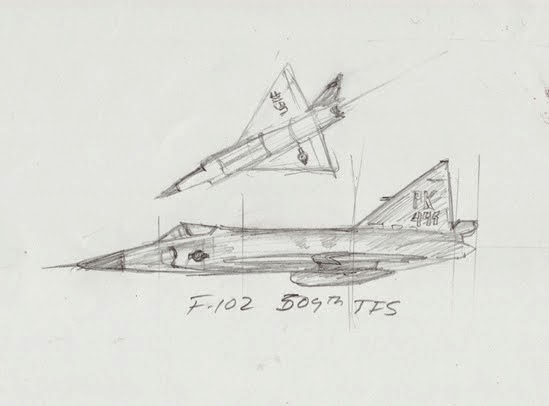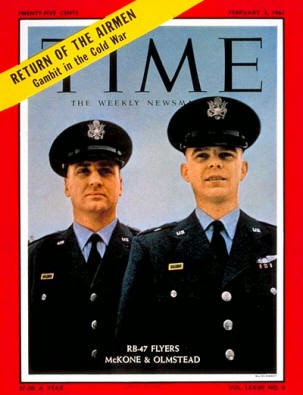Have a look at the F-4 Phantom above. It didn't fly combat and I haven't met any of the airplane's crew. Just a chick who talked her way into the backseat.
*wink wink*...I'll explain.
A regular reader of this blog, (and Vietnam War combat pilot and MiG killer), insisted I read the book, "Angel's Truck Stop*," by Lt. Col Angelica Pilato (Ret.). Here. Have a look at the cover.
Cute isn't it? And get that name, "Angel." Sitting on a Jeep...ahhh. Nice legs! And I betcha she had a crush on one of those pilots, too! (snicker). Maybe made him cupcakes. Gosh.
Hold that thought.
Imagine American history as a long wall. It goes along nicely until that period between (about) 1963 through 1975. Then, perfect storm of the Civil Rights Movement, the Sexual Revolution, Peace & Love and of course the Vietnam War, combined into a cultural tornado, scattering the times into pieces; each a separate voice onto the world-at-large. However, the world-at-large soon becomes congested with soap boxes and megaphones. Cacophony reigns. Of course, I'm here to learn about "The War" and that cuts down on the clamor. But even so, the diversity of voices is no easier to sort: McNamara, Ellsberg, Westmoreland, Nixon, LBJ, Olds, Mason, Thorsness, Coppola, Kubrick, Moore, Cherry...hell, virtually every person alive at the time has got something to say!
In short, what I hope to be a classroom becomes an open debate with no moderator.
And that conflict persists. Just the other night, I had dinner with a man who's son was preparing to write his Doctoral Thesis on American History. The son's advisor gave some telling advice: "Don't do Vietnam. No one wants to hear what you have to say." I've experienced this taint myself. When I decided to go to Vietnam** to see things for myself, the responses of others ranged from being called a Commie-lover (sorry Angry-Dude but I'm a devout Goldwater-ite) to hugs of "support" (why do I need support?!) to wide-eyed gasps.
Funny; I never experienced that at Normandy...
ANYWAY. Back to Angel's book. And that cute cover. It's the only thing cute about the book.
I'll be blunt: Angel's Truck Stop is the memoir of a bull-headed, tenacious woman who maneuvered her way into flying the Officer's Club at Udorn Air Base, Thailand in 1971. Instead of sugar and spice, I was sucker-punched by a chick who is unafraid to tell it like it was. "It was the 60s and 70s and It was the time of sex, drugs and rock 'n roll. I had two out of three of those covered," she said cooly. "It's my story and I can't sugar coat it. I had to be authentic."
It isn't (sugar coated). Angel's candor kept me flipping pages in rapt attention. Her honesty and willingness to bare herself was unsettling. As a guy, I cringed a few times and even asked her, "Sheesh! Did you really have to say that?!?" But my wife had a different perspective. She said, "Wow! She's a strong person! It tells me how far things have come along!"
Regardless, Angel held her own in a "3-F"*** culture. Yet, there's nothing prurient or gratuitous about her story and no more/less uncomfortable than reading about Slick pilots hosing blood and guts out of their Hueys.
So. What does this have to do with the F-4 above?
It’s a D-model from the 22nd TFS based in Bitburg Air Base, Germany, circa 1971. It’s also the only combat aircraft Angel got to experience during her career in the Air Force.**** Yeah, I know—Bitburg is a long way from Vietnam. But in the context of the interviewing, this was the only airplane that really made any sense to draw. As a symbol of her ambition and quest for control, it's "her" airplane.
Anyway, I asked Angel the same question that I ask any "Old Guy" who ends up being part of this blog—"If you were to have lunch with my (daughter) and had to impart your life's wisdom, what would you say?" Angel's reply was not only applicable to her own life but also gave me a fresh perspective on how to process what I've learned (so far) about the Vietnam War:
"Your life is filled with choices and you’re going to make a lot of them, some wonderful and some that you’ll say, “What was I thinking?!” When you think you have failed or made the wrong turn, don’t be so hard on yourself. Pick yourself up, learn from it and move on. If you don’t make a few mistakes, you’re not taking any risks; you’re playing it too safe. Life is an adventure, experience all it has to offer."
I hope we—Americans and Vietnamese alike—can adopt such an attitude and settle into a more unified voice. Or, as I learned from a Vietnamese college student, "Remember the past but move forward to something new."
Though I can't say Angel has finally brought the Vietnam War into any cohesive understanding, her story has taken its place among the ones I trust.
Read the book. (click here)*****
***Flying, Fighting and...
****Amusing story. You'll have to read it yourself.
*****Available direct, via amazon.com and tablets.
Cute isn't it? And get that name, "Angel." Sitting on a Jeep...ahhh. Nice legs! And I betcha she had a crush on one of those pilots, too! (snicker). Maybe made him cupcakes. Gosh.
ANYWAY. Back to Angel's book. And that cute cover. It's the only thing cute about the book.
I'll be blunt: Angel's Truck Stop is the memoir of a bull-headed, tenacious woman who maneuvered her way into flying the Officer's Club at Udorn Air Base, Thailand in 1971. Instead of sugar and spice, I was sucker-punched by a chick who is unafraid to tell it like it was. "It was the 60s and 70s and It was the time of sex, drugs and rock 'n roll. I had two out of three of those covered," she said cooly. "It's my story and I can't sugar coat it. I had to be authentic."
Regardless, Angel held her own in a "3-F"*** culture. Yet, there's nothing prurient or gratuitous about her story and no more/less uncomfortable than reading about Slick pilots hosing blood and guts out of their Hueys.
It’s a D-model from the 22nd TFS based in Bitburg Air Base, Germany, circa 1971. It’s also the only combat aircraft Angel got to experience during her career in the Air Force.**** Yeah, I know—Bitburg is a long way from Vietnam. But in the context of the interviewing, this was the only airplane that really made any sense to draw. As a symbol of her ambition and quest for control, it's "her" airplane.
"Your life is filled with choices and you’re going to make a lot of them, some wonderful and some that you’ll say, “What was I thinking?!” When you think you have failed or made the wrong turn, don’t be so hard on yourself. Pick yourself up, learn from it and move on. If you don’t make a few mistakes, you’re not taking any risks; you’re playing it too safe. Life is an adventure, experience all it has to offer."
I hope we—Americans and Vietnamese alike—can adopt such an attitude and settle into a more unified voice. Or, as I learned from a Vietnamese college student, "Remember the past but move forward to something new."
* Full title: Angel's Truck Stop: A Woman’s Love, Laughter a, and Loss during the Vietnam War" by Angelica “Angel” Pilato. Lt. Col USAF (Ret.)
**In case you didn't know what's been happening since Clinton normalized relations between the U.S. and Vietnam, our two countries have been growing into pretty good friends.***Flying, Fighting and...
****Amusing story. You'll have to read it yourself.
*****Available direct, via amazon.com and tablets.






















































